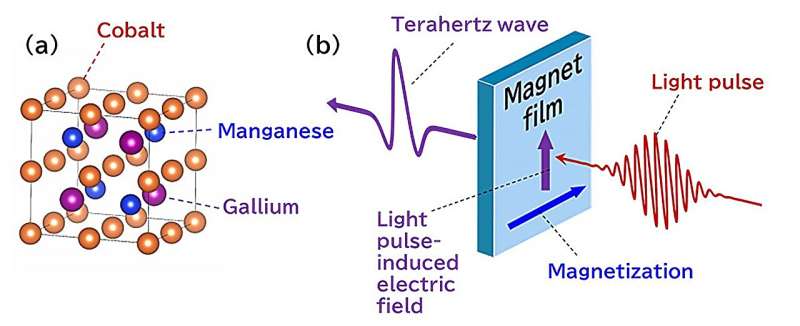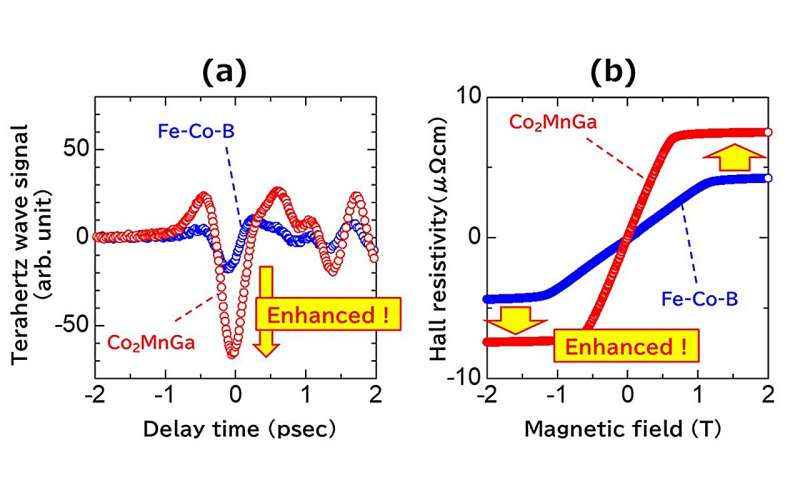This article has been reviewed according to Science X's editorial process and policies. Editors have highlighted the following attributes while ensuring the content's credibility:
fact-checked
trusted source
proofread
Generation of intense terahertz waves with a magnetic material

Terahertz waves are being intensely studied by researchers around the world seeking to understand the "terahertz gap." Terahertz waves have a specific frequency that puts them somewhere between microwaves and infrared light. This range is referred to as a "gap" because much remains unknown about these waves.
In fact, it was only relatively recently that researchers were able to develop the technology to generate them. Researchers at Tohoku University have brought us closer to understanding these waves and filling in this gap of knowledge.
Researchers at the Advanced Institute for Materials Research (WPI-AIMR) and Graduate School of Engineering have discovered a new magnetic material that generates terahertz waves at an intensity about four times higher than that of typical magnetic materials.
Taking advantage of the features unique to terahertz waves, this technology is expected to be used in a variety of industrial fields, including imaging, medical diagnostics, security inspection, and biotechnology.
Assistant Professor Ruma Mandal (WPI-AIMR) explains, "Terahertz waves have low photon energies and, unlike X-rays, they don't emit ionizing radiation. So, if they are used for patient imaging or microscopes, they may be less damaging to tissues or samples."
With these applications in mind, a team of researchers at Tohoku University aimed to develop an efficient, compact, sturdy, and cost-effective terahertz wave emitter. Weyl magnets—a type of topological material—have been shown to generate a huge anomalous Hall effect that makes them suitable for generating terahertz waves.
In this study, now published in NPG Asia Materials, single-crystal thin-film samples of a Weyl magnet made from a cobalt–manganese–gallium Heusler alloy were prepared and studied under various conditions.

It was found that the giant anomalous Hall effect originating from the topological electronic structure unique to Weyl magnets enhanced the photo-induced terahertz waves. This achievement will deepen our understanding of the interplay of light and spin in Weyl magnets.
"Although the intensity of the terahertz waves generated is still lower than that of spin-excitation terahertz emitters developed to date," says Professor Shigemi Mizukami, "the structure is simpler and expensive heavy metals such as platinum are no longer required."
Mandal and colleagues were able to experimentally demonstrate the ability of this magnetic material to produce terahertz waves so that it can be used in spintronic devices and other important applications. Such a discovery in a newly emerging field could shape the future of next generation technologies.
More information: Ruma Mandal et al, Topologically influenced terahertz emission in Co2MnGa with a large anomalous Hall effect, NPG Asia Materials (2024). DOI: 10.1038/s41427-024-00545-9
Provided by Tohoku University



















